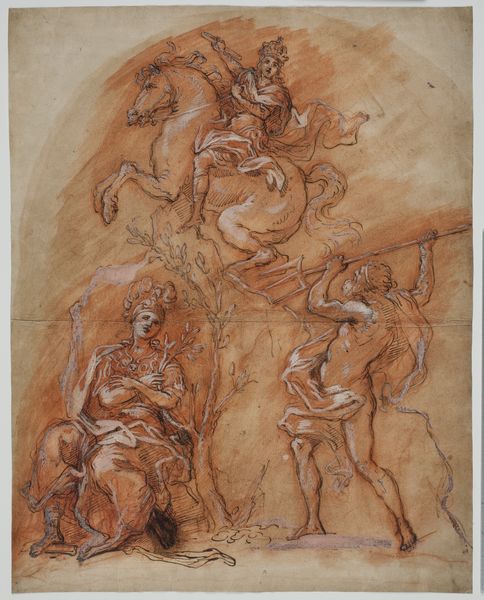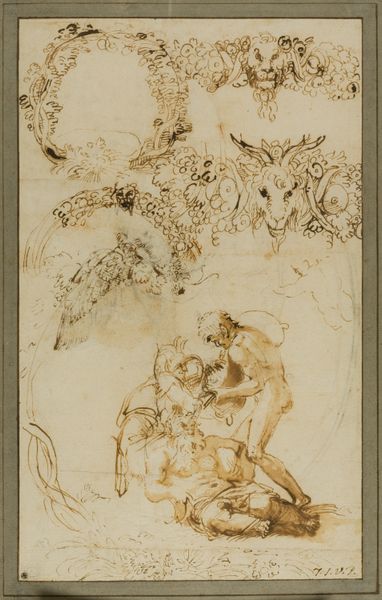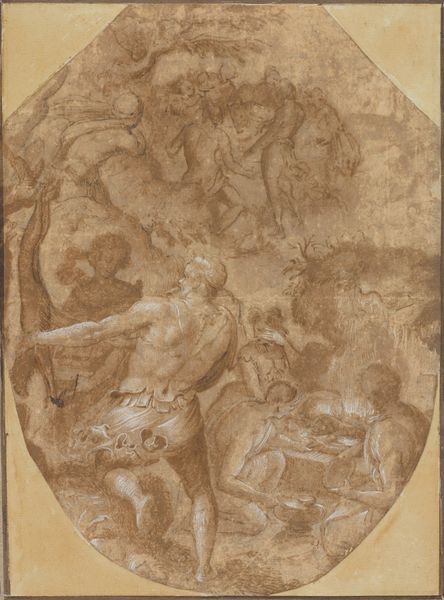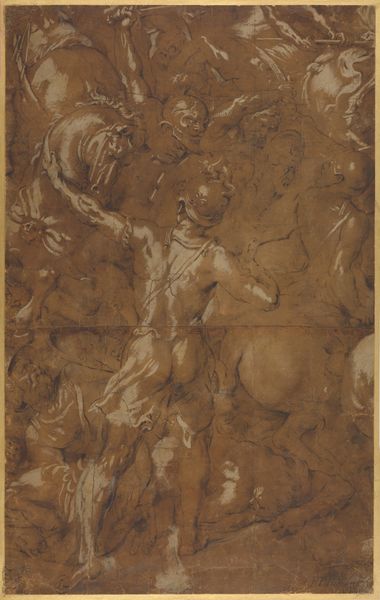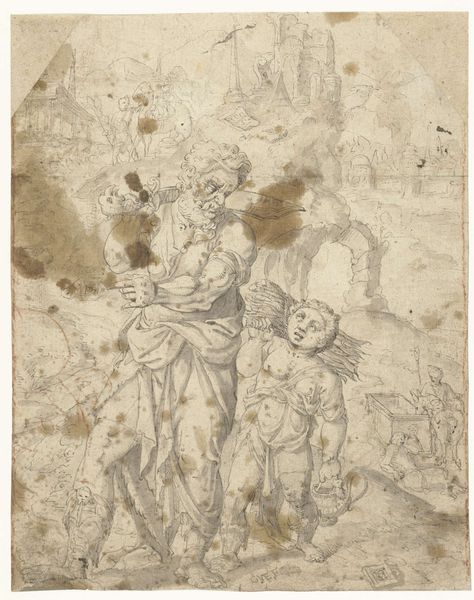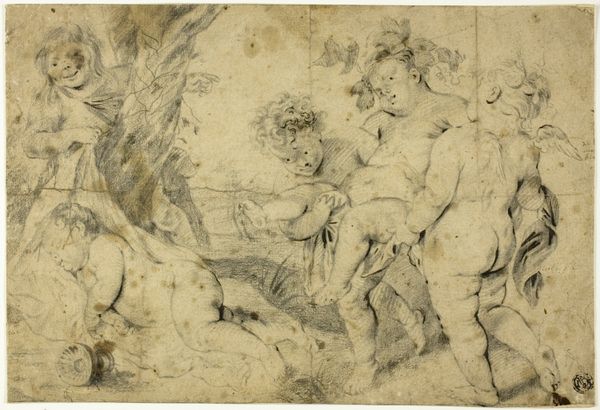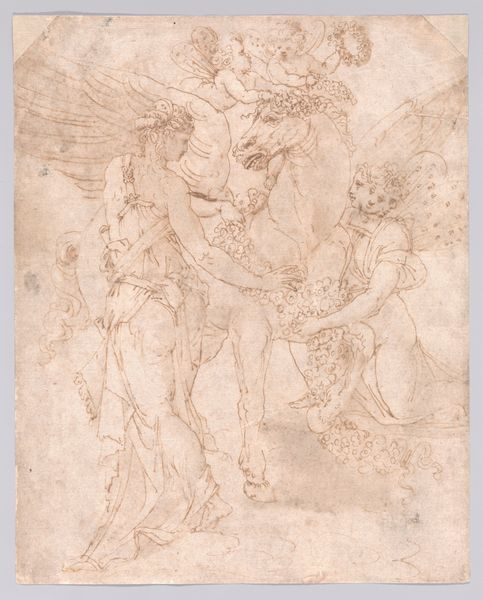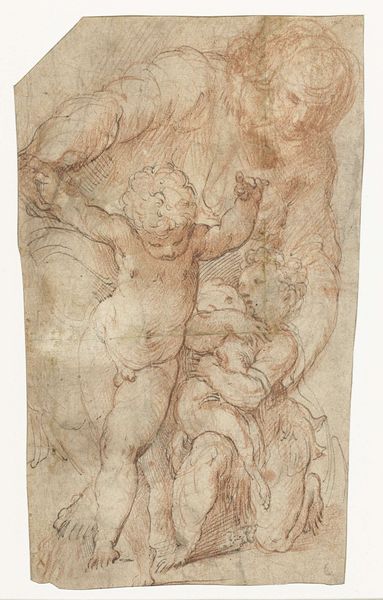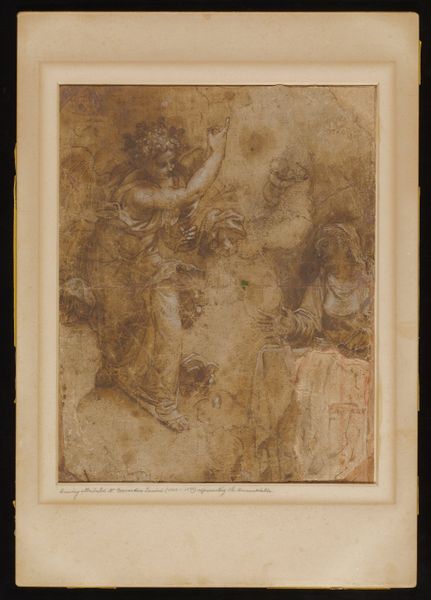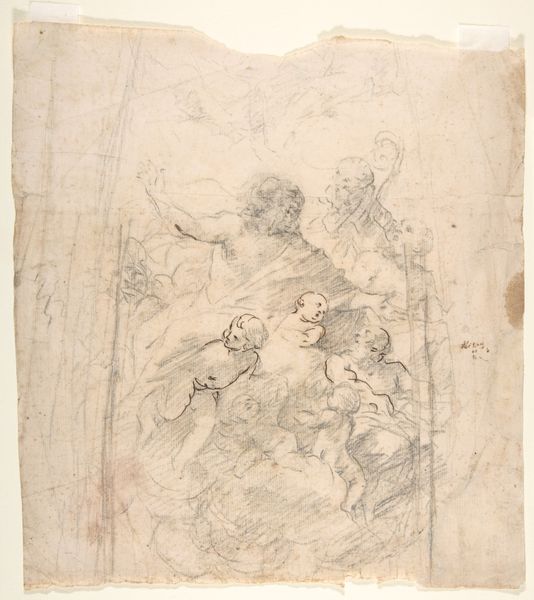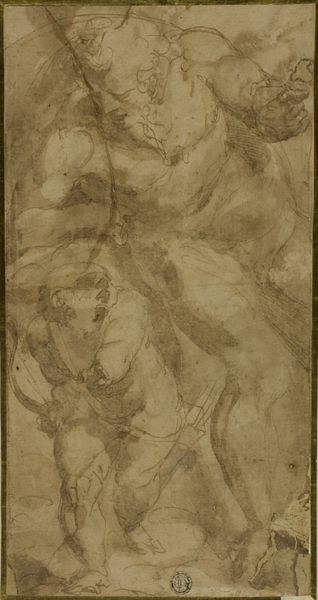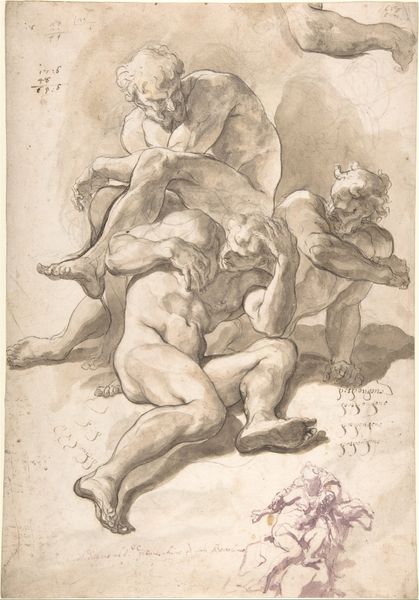
The Holy Family with the infant John the Baptist. After Giulio Romano’s Madonna della Gatta 16th century
0:00
0:00
drawing, charcoal
#
portrait
#
drawing
#
charcoal drawing
#
figuration
#
11_renaissance
#
charcoal
#
italian-renaissance
Dimensions: 395 mm (height) x 283 mm (width) (bladmaal)
Curator: Let’s turn our attention to this intriguing 16th-century charcoal drawing, "The Holy Family with the infant John the Baptist," rendered after Giulio Romano’s Madonna della Gatta. It is held here at the Statens Museum for Kunst. Editor: The first thing that strikes me is its damaged state; time hasn't been kind. Still, the softness achieved with charcoal, the subtle tonal gradations, lend a remarkable sense of tenderness to the scene. Curator: Indeed. Note how the anonymous artist meticulously employed sfumato, creating delicate transitions between light and shadow. The composition is essentially pyramidal, drawing the eye upward, a classical arrangement that emphasizes the stability and harmony of the Holy Family. Editor: The figures are intimately grouped, almost intertwined, which speaks volumes. Look at the recurring motifs, especially the Christ child. John's presence, offering a tiny cross to the infant Jesus, foreshadows His sacrifice. Mary’s tender gaze at her child evokes ideas about the bond of motherhood and the burdens and blessings attached. Curator: Precisely. The medium also contributes to the overall effect. Charcoal is naturally disposed toward subtle gradations and nuanced textures. Note how this creates a sense of depth in the folds of Mary's robes and the plumpness of the children's bodies. The formal constraints of the medium shape the overall expression. Editor: It's more than formal, I believe. The gesture of John offering the cross, usually depicted later in life, elicits contemplation of Jesus's destiny right from infancy. Curator: Perhaps. Yet, observe that while clearly indebted to Romano’s original, this piece is not a mere replication, but rather a sensitive interpretation through line, tone, and value, creating a uniquely expressive formal language. Editor: It’s undeniable that it offers a quiet commentary on faith and devotion, employing archetypes deeply embedded in the cultural consciousness. Ultimately, the artwork is both universal and profoundly personal, considering Mary and Jesus as relatable family archetypes. Curator: A rewarding look then. It seems we can equally agree it invites consideration from varied perspectives. Editor: Agreed. It has provided plenty to contemplate, formally and thematically.
Comments
No comments
Be the first to comment and join the conversation on the ultimate creative platform.
